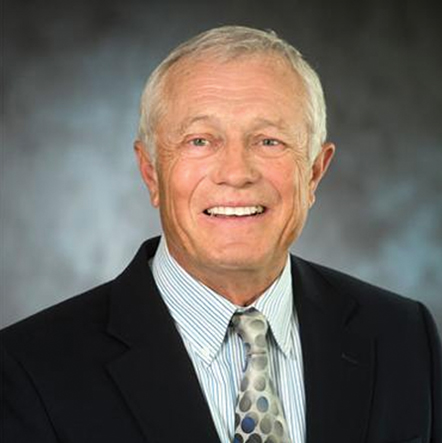
By Lee Egerstrom
Native American students’ access to higher education may have dodged a bullet in Minnesota, for the time being, but it remains under threat before the U.S. Supreme Court.
Here in Minnesota, former Minnesota legislative leader Steve Sviggum resigned his position as vice chair of the University of Minnesota Board of Regents on Oct. 25 after causing a firestorm by questioning if there was too much student diversity at the University’s Morris campus.
Sviggum has publicly apologized for raising that issue at an Oct. 13 board meeting. Facing widespread criticism for the implied racism, Sviggum resigned his board leadership position but said he will continue as a Regent until his term expires in early 2023.
What makes the Sviggum questioning of diversity especially interesting was other recent University of Minnesota Morris campus news.
The University of Minnesota system was proudly announcing U.S. News & World Report magazine in September had ranked the Morris as one of the nation’s top public liberal arts colleges for the 21st consecutive year. It was ranked 8th nationally among public liberal arts colleges and tied for 148th national among all U.S. liberal arts colleges.
University Chancellor Michele Behr had issued a statement the Regent may have missed.
“As one of the country’s top public liberal arts colleges, UMN Morris provides talented students from all backgrounds access to life-changing experiences,” she said. “This is a very special institution, and we are proud to see our work affirmed by this national ranking once again.”
The Metropolitan Urban Indian Directors (MUID), representing American Indian organizations in the Twin Cities metro area, was among groups that joined with the Morris Campus Student Association in calling on Sviggum to resign from the university’s governing board.
MUID and its 25 member organizations still want Sviggum to resign from the board. “This is personal for many of us,” said Louise Matson, the MUID vice-chair and executive director at the Division of Indian Work, a non-governmental service group in Minneapolis.
Sviggum’s resignation as vice chair was “a step in the right direction, but he should step off the board,” she said.
Matson has a niece attending University of Minnesota Morris and she has hired several Morris graduates at Division of Indian Work. When Sviggum was lessening the value of diversity at Morris, she said, “We see the faces of people we know and love. It’s a big deal.”

Sviggum explained his questioning if Morris campus was too diverse by saying two people had told him their children wouldn’t go to Morris for that reason. They wouldn’t feel comfortable there, he was told.
The Morris campus is the most diverse within the University of Minnesota system but 54 percent of enrollment is still white. Given the campus’ history as a former Indian boarding school, it does have free tuition for Native American students. They account for 28 percent to 34 percent of Morris enrollment, according to various demographic measures.
In a statement calling on Sviggum to resign from the Board of Regents, the MUID directors issued a statement saying there shouldn’t be a Regent who considers diversity, or BIPOC students (Black, Indigenous, people of color), a detriment to the university. “Worse, by specifically identifying the Morris campus, Mr. Sviggum has targeted our Native American students…”
“This is offensive and overtly racist,” the joint statement said.
As the Board’s vice chair, the MUID statement said he either knew about the large Indigenous enrollment at Morris, “or is so far detached from his responsibilities as a Regent to suggest that his cognitive abilities no longer possess the capacity needed to serve on this Board.” At Morris, study body president Dylan Young said he welcomed Sviggum’s decision to resign his vice chair position on the board and that the Regent now plans to visit the campus and meet with students, faculty and administrators in early November.
The Morris Campus Student Association had issued a resolution calling for Sviggum’s resignation.
Among reasons cited in the resolution:
“A diverse student body enhances the academic and social environment for all students and prepares students to thrive in an increasingly diverse workforce and society.
“Equal educational access is critical to preparing students for the responsibilities of citizenship and civic leadership in a heterogeneous society.”
Young is Sicangu Oyate (Rosebud Sioux Tribe in South Dakota). He said in a statement for The Circle that he looks forward to the meeting with Sviggum.
He also recognizes that Sviggum’s apology and position resignation doesn’t end potential challenges to University diversity. “I encourage everyone to look to the upcoming midterm election,” Young said. “Our representatives in the Minnesota state legislature are the people who choose the membership of the Board.
“This upcoming election will be integral to the selection of Regents who care about the values of diversity, equity and inclusion, and stand with our BIPOC students, not against (them).”
But this might not end efforts to block access to higher education for Native American, or Indigenous students, and other marginalized people often lumped together as BIPOC.
In an oh-so-student-like comment to The Circle, Young added: “This is my final public statement on the matter. I have homework to catch up on now.”
While he hits the books, attorneys representing BIPOC groups and universities all across America are watching the U.S. Supreme Court.
Oral arguments before the court were scheduled to begin on Oct. 31 in two cases where opponents of college affirmative action programs are trying to stop colleges and universities from using race as a factor in admitting students (Students for Fair Admissions v. Harvard, and Students for Fair Admissions v. University of North Carolina).
The Leadership Conference Education Fund notes the court has on four occasions declared such programs to be constitutional under carefully defined circumstances. That education-focused group is a research unit of The Leadership Conference on Civil and Human Rights, a coalition of more than 200 national civil and human rights organizations.
While those four decisions were rendered in 2003, 2013 and 2016, there is no reason to expect the current seated court will uphold the earlier decisions. There is less likelihood the court will pay attention to public opinion.
The education fund cites poll results from the University of Chicago that found 69 percent of Americans believe affirmative action helps create diverse campuses that are a benefit for all. It found that 76 percent agree college admissions should consider the lived experiences of a student in addition to high school grades and college admission test scores.
“All students deserve a fair shot at going to college, regardless of their family’s finances, where they grew up, or their racial and ethnic backgrounds – but many students of color still lack access to critical educational opportunities,” the education group said.
How this plays out in the Supreme Court could have impacts on higher education everywhere.






